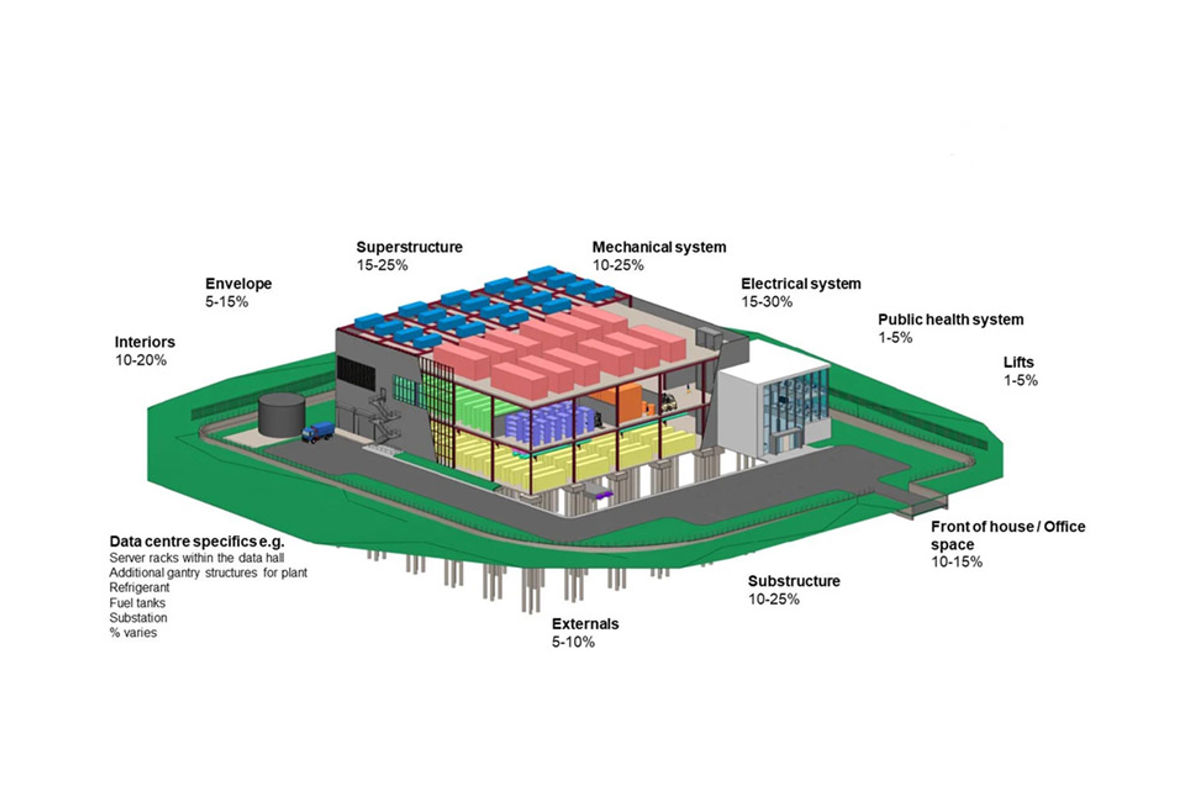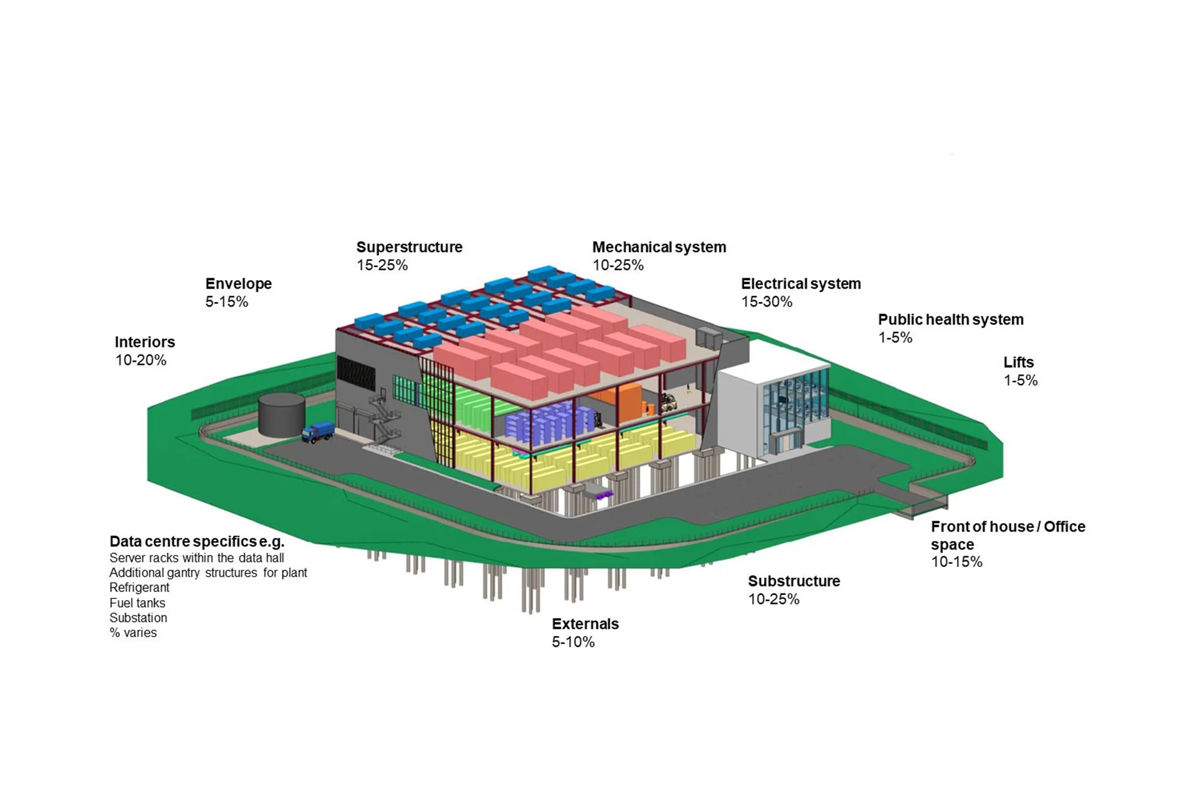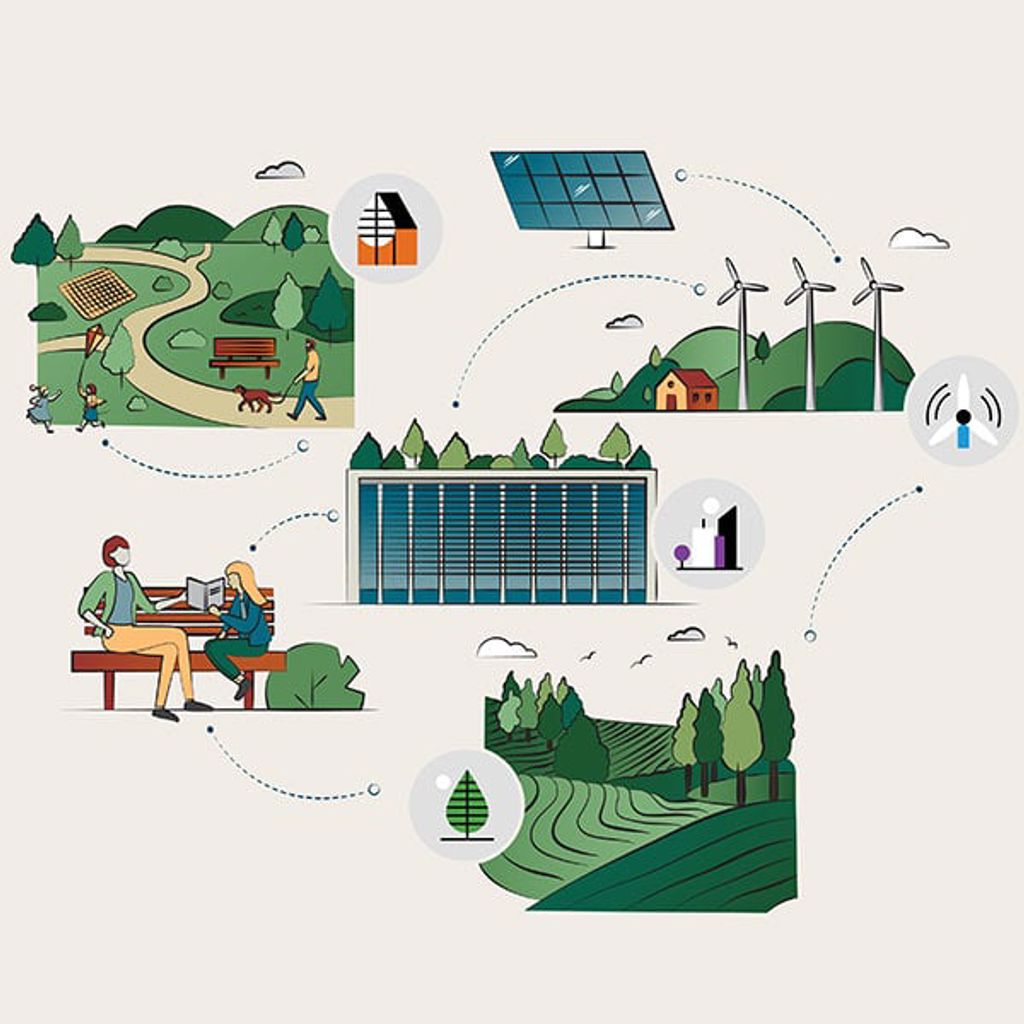How whole life carbon emissions assessments will reshape data centers
Given that the impacts of the climate emergency are widespread, and that legislation continues to evolve and regulation tightens, the future of data centers will undoubtedly be shaped by their ability to reduce carbon emissions.


UKIMEA Data Centre and Technology Leader
Gareth Williams
Director
Last updated: October 2022
As in other sectors, tech firms are stepping up their net zero commitments, with many aiming to reduce carbon emissions by 50% by as soon as 2030. Achieving these goals against a backdrop of ever-increasing demand for data services and the data centers that power them, will be tough.
According to Enterprise Ireland, “the data center sector is forecast to rise to as high as eight-to-ten percent of [global power consumption], by the end of the decade.” If nothing changes, the result will be an even greater contribution to global CO2 emissions. The radical reduction in emissions needed has implications for the design, construction and operation of data centers. At Arup we are convinced that whole life carbon assessments (WLCAs) are the only way to tackle this issue pragmatically and credibly.
A Whole Life Carbon Assessment (WLCA) is an assessment of all building-related emissions over its entire life cycle. WLCAs offer the data center industry the ability to understand the bigger picture in relation to the carbon impact of data centers and offer key insights into where the hot spots are so efforts can be made to reduce these. With the detailed insight that comes from WLCA, project teams are enabled to place greater emphasis on carbon in early site selection, design choices and material specifications. Through WLCAs, carbon can and should be treated as a key, tangible unit of measurement that is used for business decision-making in the same manner as CAPEX & OPEX.
Adopting WLCA within the data center industry has many benefits, including the ability to understand and manage carbon emissions, preparing for existing or incoming regulations, highlighting opportunities to save on costs, and reputational benefits. Of course, nothing about the push to net zero is easy, and despite the clear operational benefits, implementation presents several challenges:
Insufficient WLCA understanding within the industry WLCA is still an unfamiliar approach for many in the industry. Firms with specialized sustainability teams have a head start; however, there is still often disparity between these teams and project delivery teams, who can often make the greatest impact through collaboration on design and construction decisions. We need to see greater WCLA awareness and skills development.
Lack of an industry-standard approach to WLCAs
Common standards drive acceptance of any new rating system. Given the current immaturity of the data center industry in conducting these assessments, there is confusion about what should be included in a WLCA. In many assessments, the MEP systems and external works are excluded from the scope. Yet in some assessments Arup has carried out, the MEP systems can prove to be a huge component of the overall embodied carbon emissions of a data center and should thus be a central factor in a meaningful WLCA.
The illustration below shows how the differing components of a data center contribute to emissions. In data centers, there are several specific elements that can contribute significantly to overall emissions, e.g., racks in the data hall, additional gantry structure for equipment and refrigerant, fuel tanks, and substations. If WLCAs are to become a useful industry norm, there will need to be industry-wide agreement and definition of what must be included and rated.


Lack of consensus on conducting and reporting assessments
Another industry challenge is the lack of regulation and enforcement of WLCAs. Given that conducting a WLCA on a project is not always a requirement, it may not be perceived as a priority or a financial risk. In an ideal world, data center operators would measure and report to a common database. But which one should they choose? If it does not yet exist, who will build and maintain it, decide on the industry-wide standard for data centers, and uphold quality assurance?
Global reference designs versus regional carbon information
For global efficiency and to enable rapid growth, data center operators often build to a common or ‘reference’ design. However, regional differences in carbon factors mean that if a WLCA were performed on the same building in two different countries, one may prove to be far more ‘carbon intensive,’ driven by differences in local construction processes and grid performance, or simply due to lacking or incomplete data. This points to the need for an industry-wide agreement to harmonize regional approaches and standards for calculating, reporting, and benchmarking. On the plus side, reviewing data center reference designs for carbon efficiency also offers an ideal opportunity to create an impact across a whole portfolio. Often, carbon efficiency measures will be linked to material reduction (or elimination), so they can produce combined carbon and cost savings.
Lack of widely available and accurate industry data
Currently, access to accurate carbon emissions data is a challenge that all industries face when it comes to WLCAs, but this should not deter us. Ongoing research is refining and expanding what we know about emissions, bringing in various industry players including manufacturers, contractors, consultants, and academia. As this process matures, it’s important to note what assumptions are being made and where the carbon data has been sourced – enabling future review and updates if required.
Making sense in a cost-conscious, time-driven industry
Data centers are a fast-moving, margin-driven enterprise – so there’s a danger WLCAs may fall off the priority list when considering other elements of design and construction. We need to encourage a mindset shift to build acceptance of WLCAs. Hopefully, the assessments’ clear commercial value and ability to reveal the emission ‘hot spots’ in a design will provide a spur to change. To gain the full value of the process, there needs to be time in the design process after the WLCA has been conducted to make the relevant iterations and improvements. This might mean deviation from a favored reference design, and it will require data center providers to embrace this change in typical processes to achieve the full value of what WLCAs can offer.
As has been said often on this topic, you cannot manage what you do not measure, and the awareness of carbon as a key metric in the data center industry must grow rapidly. Given that the impacts of the climate emergency are widespread, and that legislation continues to evolve and regulation tightens, the future of data centers will undoubtedly be shaped by their ability to reduce carbon emissions. Whole-life carbon assessments can drive decision-making, reveal the gaps in knowledge, and improve design and construction in ways that reduce emissions across this vital area of global infrastructure.
Get in touch with our team
Insights
Explore more data centre insights
The future of data centers: how is the industry changing in the AI era?

Circular thinking for data centers

Nature and technology: balancing data centres with biodiversity

The good neighbour theory: how data centers can strike a better balance between technology, community and nature


